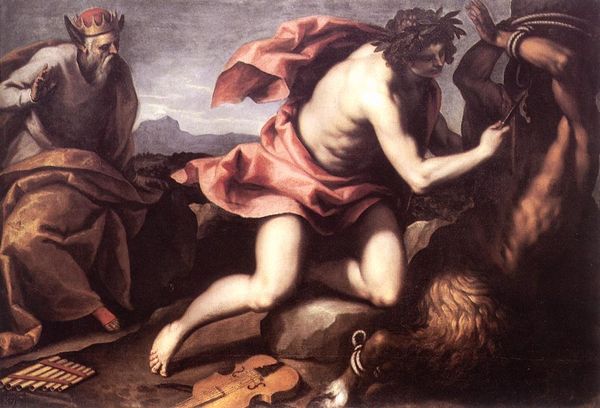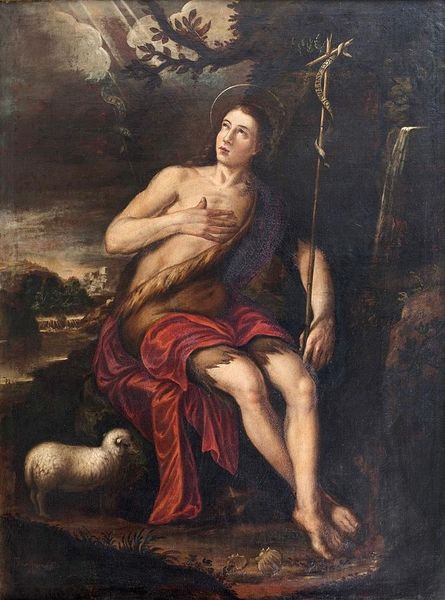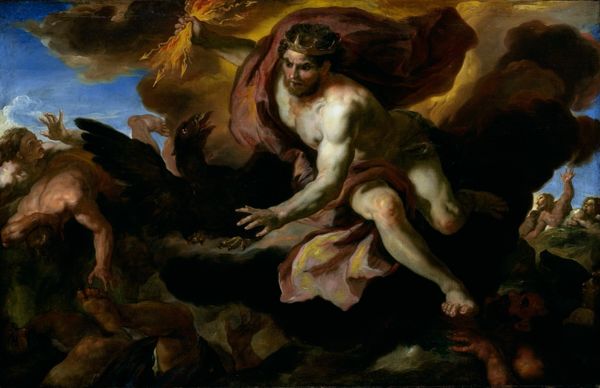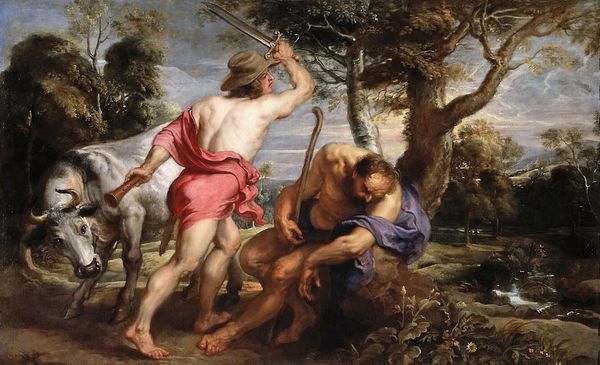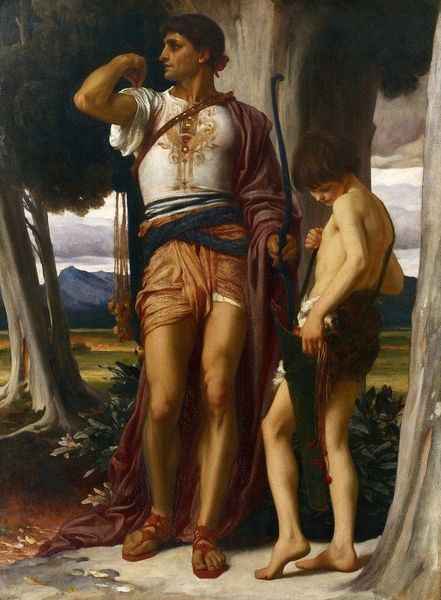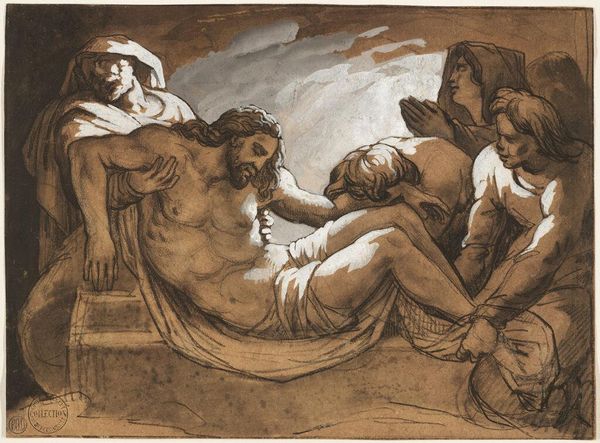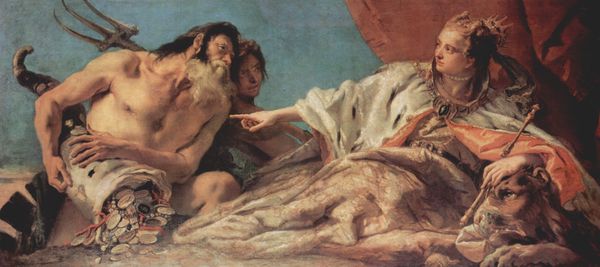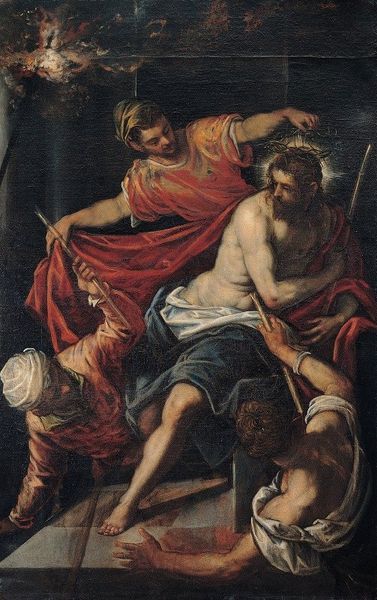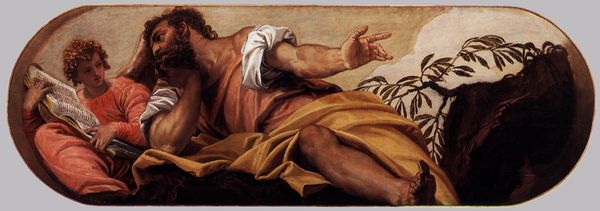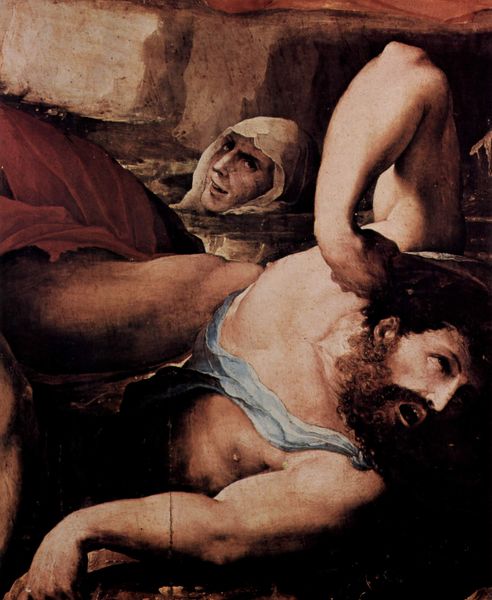
oil-paint
#
baroque
#
oil-paint
#
landscape
#
figuration
#
oil painting
#
roman-mythology
#
mythology
#
human
#
history-painting
#
nude
Dimensions: 127 x 248 cm
Copyright: Public domain
Diego Velázquez created this oil on canvas depicting a scene from classical mythology, sometime in the 17th century. It shows Mercury, messenger of the gods, after he has lulled Argus to sleep and slain him. The painting would have been commissioned by a member of the Spanish court, steeped in classical learning. Yet Velázquez has given the story a very human spin. The winged god looks exhausted after his murderous task and Argus, with his rough clothes, seems less a monster than a weary labourer. How might the painting reflect its cultural moment? Spain was then a global empire, built on exploitation and violence, but also a centre of artistic patronage. The scene invites us to reflect on power and its consequences, then as now. To understand the painting more fully, we can turn to classical texts, histories of the Spanish court, and studies of Velázquez's technique, allowing us to understand this work as something contingent on its social and institutional context.
Comments
No comments
Be the first to comment and join the conversation on the ultimate creative platform.
